 |
 |
 |
 |
 |
 |
 |
 |
 |
 |
 |
 |
 |
 |
 |
 |
 |
 |
 |
 |
 |
 |
 |
 |
 |
 |
 |
|
The Mexican Army of Operations in Texas |
|
|
 |
|
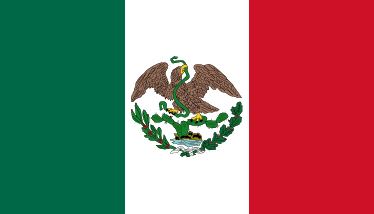 |
|
 |
|
|
|
|
|
 |
|
|
|
��������������� When the War for Texas Independence broke out in 1835 and Texan forces seized control of the state the Mexican general and president turned dictator Antonio Lopez de Santa Anna immediately set about raising troops to march north and destroy all resistance to his rule. This was the birth of the Army of Operations in Texas. In supreme command was Generalissimo Santa Anna with the bulk of the army which marched on San Antonio. About a third of the army under General Jose Urrea was sent up the coast toward Goliad. Sana Anna had brigades under General Jose Andrade, General Antonio Gaona, General Joaquin Ramirez y Sesma and General Manuel Castrillon. General Vicente Filisola was his deputy and second in command. Among his top commanders were some of the best that the Mexican military had to offer; men like Colonel Juan Almonte, Colonel Juan Morales, Colonel Don Francisco Duque and his French quartermaster general Colonel Adrian Woll. |
|
|
��������������� General Sesma, a man who shamelessly flattered Santa Anna and compared himself to Marshal Murat, commanded the vanguard brigade and his forces were the first to arrive in San Antonio in preparation for the siege of the Alamo. Along the way Santa Anna had been joined at Laredo by the defeated forces of his brother-in-law General Martin Perfecto de Cos who broke his parole and returned to the Alamo to avenge his earlier defeat. The Mexican army had solid infantry who proved themselves to be very well disciplined even if they were rather poorly armed and equipped. The Mexican cavalry was second to none and have been judged by many military historians as the best cavalry troops in all of North America at the time. The elite soldiers of the army were the combat engineers or sappers under Colonel Agustin Amat. The artillery was the weakest arm with Santa Anna bringing along only a few light field canon and howitzers. In addition, Santa Anna brought along no priests and no surgeons or medics. Female camp followers helped out and some doctors were taken prisoner at Goliad and spared from the massacre to treat Mexican wounded. |
|
|
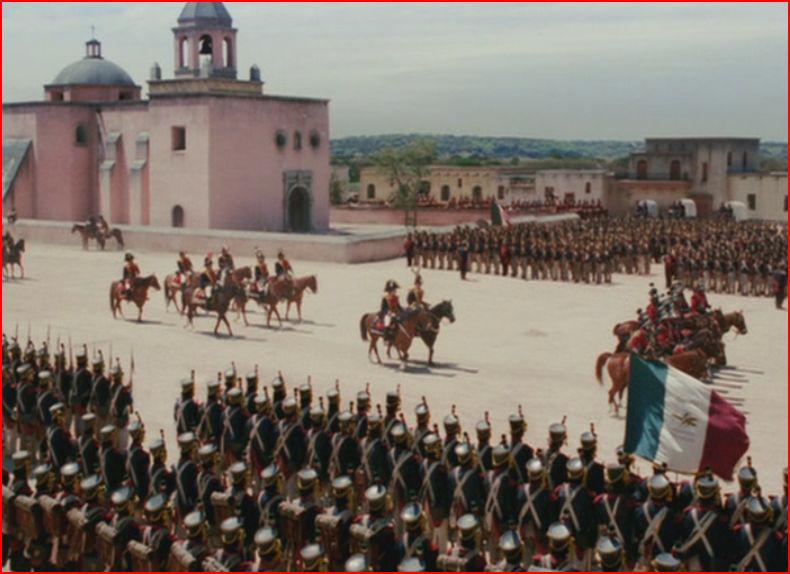 |
|
|
��������������� The Texans were known, in some cases at least, to sorely underestimate the capability of the Mexican soldier. This was a mistake and ignored some inherent differences in the strategic outlook of the opposing forces. The Texans tended to be more individualistic given their frontier, independent, survivalist and rebellious background. The Mexican army, on the other hand, fought as a team following the example of Napoleon Bonaparte. General Santa Anna himself liked to style himself as the ?Napoleon of the West? and would not tolerate any ideas that were not in line with the stratagems of the French Emperor. |
|
|
��������������� The Mexican army was outfitted along the lines of the Spanish army of the period which was heavily influenced by the French Imperial army with the most standard uniform items being a blue tailcoat, white trousers and leather shako for full dress and a white jacket, white trousers and white shako cover for tropical wear. Weaponry was primarily British. The standard long arm was the smoothbore flintlock musket, bought as war surplus from the British and known as the Brown Bess. The chasseur companies were armed with British Baker rifles which Wellington made famous on the Iberian peninsula and which was used to kill Texan Colonel Ben Milam at the battle of San Antonio. The cavalry included regulars who resembled French cuirassiers and presidia lancers. Like any army in the world the Mexican army had companies classified as fusiliers, grenadiers and chasseurs or light infantry (known in the Mexican army as cazadores or hunters). All battalions were listed as either active or permanent and there was also some loyalist irregulars, particularly on the coastal front. |
|
|
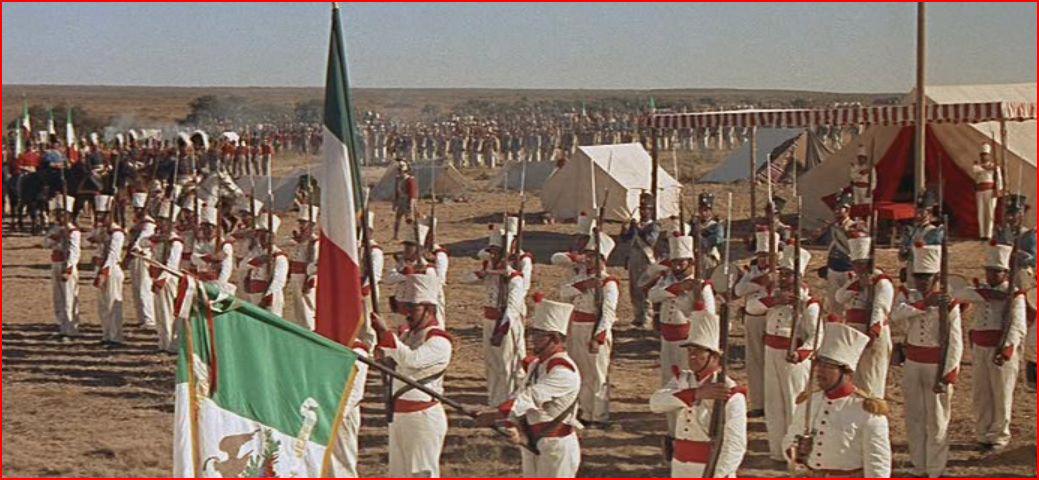 |
|
|
��������������� When Santa Anna set out from Mexico he had his army organized into two divisions plus the cavalry. The first division was commanded by General Joaquin Ramirez y Sesma with the battalions Matamoros, Jimenez, San Luis Potosi and the Dolores Cavalry Regt. The second division was led by the generalissimo himself and consisted of two brigades. The first was led by the corrupt General Antonio Gaona (who confiscated supplies and sold them to the army at inflated prices) whose command included the Aldama, Toluca, Queretaro and Guanajuato battalions. The second brigade under Santa Anna was commanded by General Eugenio Tolsa who was over the Guerrero, Mexico City and Guadalajara battalions. The cavalry was commanded by General Juan Jose de Andrade and included the regiments of Tampico, Cuautla, Guanajuato, San Luis Potosi and Bajio. There were also a few presidia troops (local garrison forces) and the elite Zapadores under Lt. Colonel Augustin Amat. |
|
|
|
��������������� The detachment headed for Goliad under Brevet Brigadier General Jose Urrea included the Cuautla Regiment of Cavalry, Active Battalion Yucatan and detachments from the San Luis Potosi and Bajio Cavalry. At the Rio Grande Santa Anna reorganized his force and also enlarged it with the addition of the forces under General Martin Perfecto de Cos who had surrendered San Antonio after a hard battle and had been paroled on the promise that they would not fight against the Texans again. The first brigade, under General Gaona included his own Aldama battalion as well as those of Toluca, Queretaro, Guanajuato and the Zapadores. The second brigade under General Eugenio Tolsa was comprised of the Morelos, Guerrero, Mexico City, Guadalajara and Tres Villas battalions. General Andrade remained in command of the cavalry with the Tampico and Guanajuato regiments under his command. |
|
|
��������������� Major General Vicente Filisola, deputy commander of the army, was among the more professional soldiers in the Army of Operations. The Cuban born Brigadier General Manuel Fernandez Castrillon was also a veteran of the Spanish army and known to be gallant, brave and quick thinking. Some of the more famous names in the Mexican army were those of the San Luis Potosi battalion commanded by Colonel Juan Morales, the Matamoros Battalion under Colonel Jose Maria Romero and the Toluca Battalion led by Colonel Don Francisco Duque. With General Urrea was the Tres Villas Battalion under Colonel Don Cayatono Montoya. The troops with General Cos included Colonel Nicholas Condelle of the Morelos Battalion and Colonel Domingo de Ugartecha who, as the local commander of San Antonio, had dispatched the troops to Gonzales where the first skirmish of the war broke out. |
|
|
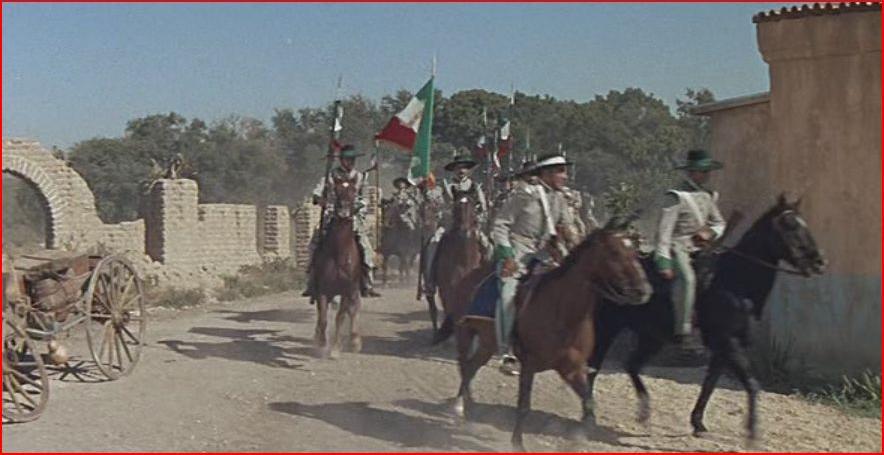 |
|
|
��������������� The first troops to arrive in San Antonio were cavalry, the advance units with the vanguard under General Sesma who were spotted riding over the Alazan Hills by a Texan lookout in the bell tower of San Fernando Church. Santa Anna immediately began placing his artillery to begin a constant shelling of the Alamo and raised a red flag over the Church to show the Texans that he intended to take no prisoners once his offer of unconditional surrender was refused. The army was stretched over a considerable distance and Santa Anna did not wait for his entire force to arrive before he determined to assault the Alamo on the morning of the thirteenth day of the siege. Some officers like Colonel Juan Almonte and General Castrillon urged holding off the attack until their heavier artillery arrived after which they could demolish the Alamo walls and likely force a surrender with no attack at all. Santa Anna would hear of no such things and commented that the lives of soldiers were no more important to him than chickens. |
|
|
|
��������������� Santa Anna gave orders for an attack from four sides. The first column would be led by General Cos and in his absence by the generalissimo himself. Colonel Don Francisco Duque would command the second column with General Castrillon as his second. The third column would be led by Colonel Jose Maria Romero and should he fall Lt. Colonel Mariano Salas would take charge. Colonel Juan Morales would lead the fourth column with Colonel Jose Minon as his second. Santa Anna would direct the reserve force under Amat consisting of some flank companies and the sappers while the cavalry patrolled the perimeter to intercept any Texans attempting to flee or Mexicans shirking the battle. In the early morning hours of March 6, 1836 the order was given and the Mexican columns charged forward into a hail of Texan rifle fire and canon shot. |
|
|
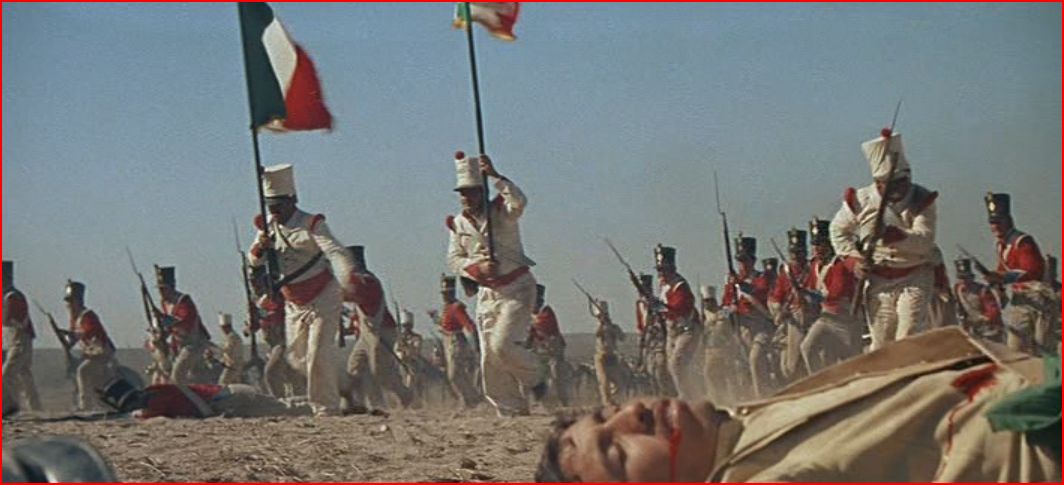 |
|
|
��������������� Losses were heavy and for a time the Texans held off the Mexican onslaught. Colonel Duque was killed and General Castrillon took charge of the forces on his front. Many men were killed by friendly fire and General Santa Anna sent in his elite reserve to help break through the weak north wall. The Mexican troops were inspired when General Juan Amador began climbing the wall and calling on the soldiers to follow him. They did so and the north wall was breached. Mexican troops poured into the Alamo plaza and began the systematic annihilation of the defenders. According to some accounts, such as that of Sapper Lt. Colonel Jose Enrique de la Pena there were about 7 Texans taken prisoner. General Castrillon tried to intervene but Santa Anna had them executed as was his policy. He dismissed the battle as unimportant but Colonel Almonte at least noted that another so costly a victory would ruin the Mexican army. |
|
|
��������������� Following the taking of the Alamo Santa Anna was eager to crush all remaining Texan forces and seize the Texan government which had declared the independence of the Republic of Texas on March 2, 1836. To this end he sent General Sesma with the Aldama, Matamoros and Toluca battalions with the Dolores and Tampico cavalry regiments racing ahead to San Felipe de Austin. Colonel Morales with the Jimenez and San Luis Potosi battalions were sent to reinforce Urrea at Goliad. General Tolsa with the Guerrero and Mexico City battalions was later sent to reinforce Sesma and Colonel Montoya was sent with the Tres Villas battalion and those of the Guerrero battalion who had not accompanied Tolsa to reinforce Urrea as well |
|
|
|
 |
|
|
��������������� On the whole it was the Mexican force under brevet Brigadier General Jose Urrea which performed the best, winning every single engagement they had with the Texans, though, granted the Texans were always at a severe disadvantage. Urrea had intercepted a poorly coordinated attempt to attack Matamoros, swallowed up a good portion of the Texas army out of Goliad who had been sent to evacuate colonists and he had intercepted a group of volunteers from the U.S. at Copano Bay who had planned to join the Texans at Goliad under Colonel James W. Fannin. He seized the presidio at Goliad after the Texans abandoned it and, pushing his men hard forward, overtook the little Texan army in open country near Coleto Creek. Urrea managed to obtain the surrender of Colonel Fannin and his men and marched them back to dismal confinement at Goliad. General Urrea moved on to continue the campaign, leaving orders that the 400 or so prisoners be treated properly. However, Santa Anna ordered that they all be executed. His orders prevailed and on Palm Sunday, March 27, 1836 the Texan prisoners were massacred. |
|
|
��������������� The only thing standing between Santa Anna and total victory at that point was General Sam Houston and his small army of Texas volunteers. Santa Anna divided his army in the hope of casting a wide web. General Gaona marched north from San Antonio, General Urrea marched south to Matagorda and Brazoria while Santa Anna took 750 men from General Sesma to try to race ahead and intercept the Texan government at Harrisburg. He planned on reassembling at Fort Bend but never got the chance. Houston finally stopped retreating and decided to launch an attack on Santa Anna while his forces were divided. On April 21, 1836 General Cos arrived at the camp near San Jacinto which boosted the Mexican strength to 1,300 roughly and one canon. That same day General Houston and his Texas army charged the Mexicans lines screaming cries of vengeance for the Alamo and Goliad. The Mexican army was taken totally by surprise as not so much as a single sentry had been posted even though General Castrillon had warned Santa Anna of the danger. |
|
|
|
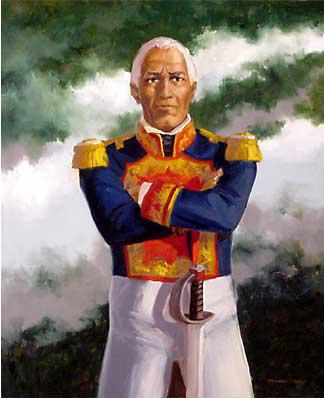 |
|
|
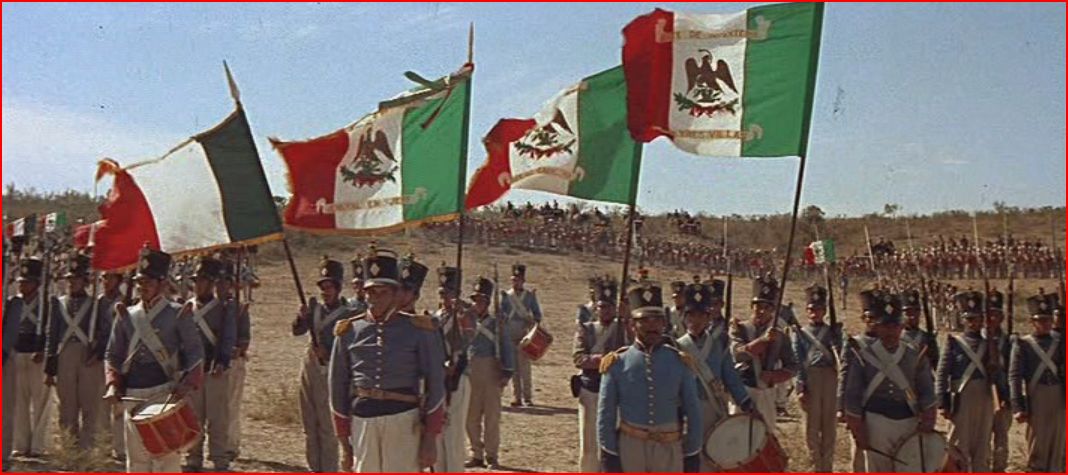 |
|
|
General Castrillon |
|
|
��������������� Generalissimo Santa Anna had been dallying in his tent with a local girl and immediately fled the scene, abandoning his army to save his own life. General Cos did the same but other Mexican officers did their best to mount some sort of defense but it was to no avail. General Castrillon bravely stood his ground and despite the efforts of Thomas Rusk, Texas Secretary of War, to save him he was cut down. Colonel Almonte rallied a group of survivors, hid them until Texan ardor had cooled somewhat and then surrendered with them. Santa Anna was found, half dressed as a regular soldier, but was discovered when brought before the other prisoners at which time his soldiers came to attention and saluted him. Santa Anna surrendered Mexican claims to Texas and ordered the Army of Operations to march south of the Rio Grande in exchange for his life. His orders were directed to General Vicente Filisola, his deputy, who was then the commander of the Mexican army. |
|
|
��������������� Over the objections of officers like General Urrea, General Filisola complied with the orders of Santa Anna and ordered the army to retreat. This was later the cause of a great deal of controversy within the Mexican military and General Urrea in particular could not understand why Filisola would order the retreat as his forces had known nothing but victory while in Texas. Filisola, however, an Italian born veteran of the Spanish army, insisted that their supply lines were overstretched, the weather was bad and the army could not have continued the advance anyway with any reasonable expectation of victory. In any event, it was the end of the Mexican Army of Operations in Texas. He did receive word from the government in Mexico City to hold what territory had been taken, but by that time the army was already south of the Rio Nueces, malnourished, poorly equipped and exhibiting the drop in morale of an army that considered themselves beaten. Upon reaching Matamoros, Mexico the government gave command of the army to General Urrea and Filisola resigned his post as deputy commander, passing to General Andrade. |
|
|
 |
|
|
��������������� The Mexican Army of Operations had a mixed record, mostly due to the careless decisions of her supreme commander rather than any fault of the average soldier. Some were not good soldiers it is true, the temporary troops being treated little better than canon fodder and performing as such. However, the Mexican cavalry was excellent and many of the permanent infantry battalions performed with remarkable bravery and determination. Some officers became famous for the courage they displayed such as Colonel Morelos, known as the Brave Morelos forever after the attack on the Alamo and Colonel Duque who continued to cheer his men on in the attack even as he was trampled to death by them. The losses taken at the Alamo were heavy, and there were losses to friendly fire, but all of this could have been avoided had Santa Anna waited a day or two for the 12 pound canon to arrive. The division under General Urrea never knew defeat and indeed the massacre which so sullied the Mexican cause was again only because of the direct orders of Santa Anna. Given the fact that they marched so far so fast with so few supplies and no medical corps the Mexican Army of Operations in Texas must be given its due of credit as a tough, frontier fighting force. |
|
|
��������������� Many of the officers of the Army of Operations went on to very distinguished careers in the service of Mexico. General Filisola was recalled to duty during the Mexican American War in which he commanded a division. General Jose Urrea, ironically enough, ended up as a revolutionary himself, commanding an uprising in favor of the 1824 constitution. Lieutenant Colonel Mariano Salas, Colonel Juan Almonte and Colonel Adrian Woll all ended their days in the service of the Mexican Emperor Maximilian as generals of the imperial army. Yet, there was only so much the quality officers could do when their commander was a man so arrogant and often careless as Santa Anna. |
|
|
|
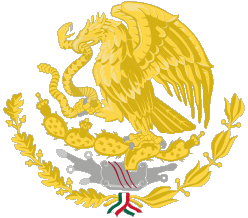 |
|





















